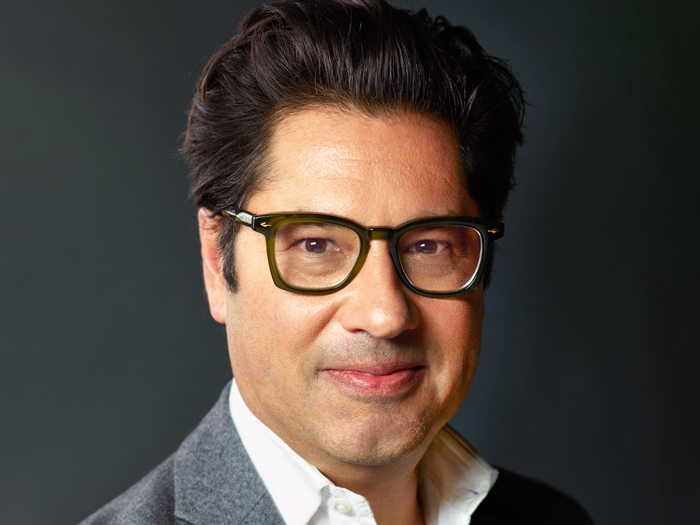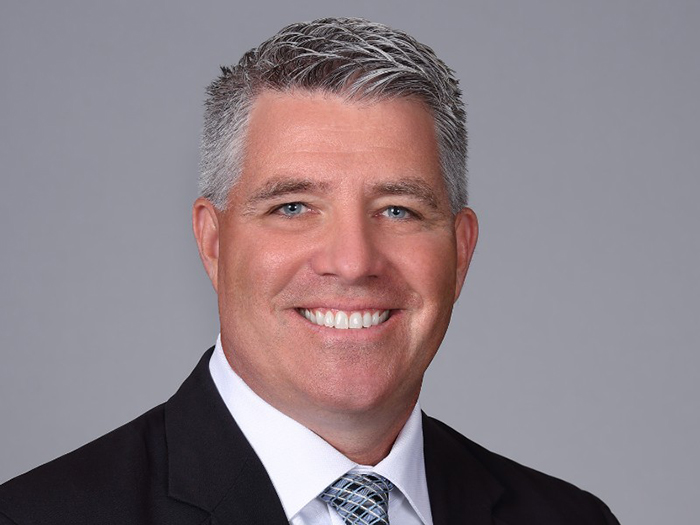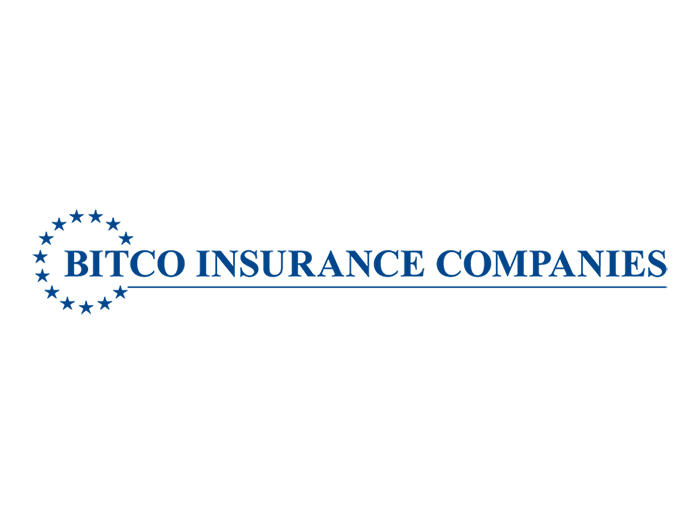7 Questions for Archipelago’s Hemant Shah

In early January, Dan Reynolds, the editor-in-chief of Risk & Insurance®, caught up with Hemant Shah, the cofounder of modeling company RMS and now Archipelago, a tech company that is giving insureds a clearer view of their risk exposures.
Risk & Insurance: What would you say was the motivation for forming Archipelago?
Hemant Shah: For all those years at RMS, like many in the industry, my vantage point was from the perspective of the insurer and the reinsurer. After 25-plus years of trying to help insurers and reinsurers quantify and manage risk, I started to realize that some of the most interesting business questions in risk management weren’t with the carriers and the reinsurers — they were with the buyers.
I wanted to challenge myself to go upstream and not just sit behind the shoulder of an underwriter or a reinsurer. After all, who actually is the customer of this trillion dollar P&C industry and what risk management problems are they trying to solve?
They’re not just a spreadsheet that comes into the market, they are a huge balance sheet. They manage these assets, they develop these assets, they maintain these assets, and they insure these assets.
So it was a challenge to say, “How do we go upstream and create value and impact for the buyer, the customer of the insurance market?” It’s been like crossing the blood-brain barrier. The language is the same, some of the concepts are the same. Risk is risk. Insurance is insurance. Capital is capital, but the vantage point is completely different.
R&I: What were you seeing that the buyer needed that you wanted to help them accomplish?
HS: The shift on the other side of the value chain is that the buyers are increasingly retaining more risk. They are increasingly asking questions about “How do I manage my risk?” and shifting their mindset from one of “I procure insurance” to “I sell risk.”
They were asking, “Why am I understanding my risk solely through the lens of how the underwriters quote my price when I go once a year to renew my policy? I should know more about my risk than my carriers. After all, these are my assets. I am the steward of these assets.”
The new frontier is “How do you empower the buyers to make better decisions about their risk, not just at the time of transacting their insurance renewal, but over the life cycle of their stewardship of these properties?”
Because after all, it’s not just about insurance. It’s also about the resiliency of the buildings they manage, over years and sometimes decades; How can they improve those assets? It’s a similar set of quantitative and data driven conversations, but the perspective is different. The use cases are different, and it’s exciting because it’s a fresh perspective on how to create value in the risk and insurance value chain.
R&I: It’s not just about the data, right?
HS: Exactly. One of the more surreal situations is that buyers’ assets are reduced to lines in a spreadsheet. In many cases, you’re talking about exquisite assets that have been developed, maintained and managed. They represent hundreds of millions — and often billions of dollars — in insured values. These spreadsheet-based SoVs are often a few columns filled in with cryptic codes and a lot of white space and missing information.
The task is how to bring those assets to life in a way that not only conveys the risk profile more robustly to the brokers and to the underwriters, but helps the owners and their risk managers better understand the drivers of exposure, hazard, and risk while empowering them to make better decisions about how they can manage and mitigate their risk.
This can’t be done in isolation. We understand that there’s a very robust value chain. The retail brokers play a vital role in this. This is not about pushing anybody aside. Some of our most successful direct relationships with owners are in partnership with their top tier broker to create win, win, win outcomes. How do you help the broker deliver better service offerings to their clients? How do you make the client take control of their own data so they feel more empowered?
You help them articulate the profile of their exposure and risk, and you help them enable that insight to the panel of underwriters in collaboration with their brokers. Because as you know, these are large, scheduled accounts that have dozens, sometimes 100- plus insurers all participating in the tower. They all need to consume this data to make better decisions. So the win-win-win outcome needs to be anchored from the perspective of the insured who is buying the policy.
R&I: You founded Archipelago five years ago. How have things changed since you founded the company?
HS: It’s always been a leap of faith to not only create a new company, but to define a problem in a way that hasn’t been defined before with a new kind of solution. To answer your question, things have gone well. We started with some of the largest property owners in the world, tapping into their desire to take more control over their own view of risk.
For example, one of our earliest customers is a company called Prologis. It’s not a household name, but it’s the largest owner of logistics real estate in the world. They have almost $200 billion of assets under management.
Prologis has tremendous value tied up in the successful operation of these facilities and they have thousands of them. They have their own construction teams. They build these buildings, they manage these buildings, they walk the roofs of these buildings, they have all kinds of incredible, disparate documentation and insight.
But it’s all scattered. So we go to firms like Prologis and tell them “We can create an environment where you can manage and maintain not only your data but your own understanding of your risk and exposure.”
You can invite your brokers and your underwriters into your sort of virtual data room, which is your understanding of your risk. Then you can be more proactive and you control the process.
So we’ve signed up four of the five largest real estate owners in the world, some of the largest tech companies, some of the largest operating companies. We are serving different industries from hospital groups to retailers to tech to life sciences to industrial operating companies. There are hundreds of companies on Archipelago now using us as a way to structure their data and partner with their brokers to make that data available to their market.
One of the most important, almost organic developments, was our relationship with our early customers. They built our credibility with the brokers because they saw that we were creating value for their customers as well in a way that benefits them.
Then they started saying, “Well, wait a minute, we had a great experience on Acme Industries. I’ve got a lot of other customers. Can I introduce you to them? And can I standardize my process?”
It’s better for everybody to have a more accurate, up-to-date customer with an empowered view of risk. It also makes it easier for the broker to differentiate their placements in a tough property market.
It’s a tough property market out there. These owners and these insurers are competing for top quality capacity and they have to differentiate themselves and go the extra mile to say “We are in control of our risk. We’re in control of our risk management profile. We’re in control of our asset quality and we can represent that through high quality data.”
R&I: So you’re in a situation where, as you mentioned, brokers are now bringing you to clients, because they’ve had that experience with you. Are there ways in which insurers and brokers are doing business that are still, let’s say, challenging for you to deal with?
HS: Challenges are inevitable! It’s table stakes in any established, mature market. People have been doing things a certain way and it is what it is.
Sometimes there’s not a lot of introspection about “Is there a better way to do it?”
What’s really helped is that we didn’t go to, say, a broker or an underwriter and say “Let us convince you to change your business process.” We’ve gone to their customer’s customers.
So when you show up at the door of the broker and insurer with a mutual customer like Prologis: Their data is beautifully rendered accurately coded, richly understood. The risk manager is more empowered. Then it’s a very different conversation.
When you do that, you get reactions like ”How come somebody hasn’t done this before?” which often is the signal that you’ve actually done something innovative.
It starts with the corporate buyers, who are often so far removed from the re/insurance industry’s conversations that their needs are hiding in plain sight. Go talk to the customer and innovate from their perspective.
Then, you can get a flywheel turning, empowering their brokers to come on board and from there insurers are delighted to link to better data to properly deploy their capacity and manage their risk appetites.
R&I: I’m thinking about macroeconomic factors such as inflation. How does that impact dialogue and how well the seller of risk is handling their narrative with the underwriters?
HS: Sometimes timing is important. If we had formed Archipelago in the teeth of a soft market, things might be different. We might not have made as much progress. I don’t want to celebrate a hard market because seven years of double-digit price increases has been challenging for buyers to manage.
But it’s clear the status quo is not working anymore. Property owners and risk managers can’t just roll with the status quo. We are seeing more frequent cat events, rising costs of exposures, and years of rate increases have made insurance costs highly visible to corporates’ CFO’s and business executives.
When the CFO says “Are you kidding me?” ceding premiums can no longer be the only strategy. How can we strategically retain more risk, should we consider or expand our captive, what’s the ROI of investing in mitigation to make the buildings more resilient?
And, some of our clients are pursuing alternative risk transfer in the form of issuing catastrophe bonds, which is remarkable innovation.
Reinsurers bought CAT bonds and then insurers bought CAT bonds. Now you have large corporations issuing indemnity CAT bonds because they have data, they have analytics, they can structure these things with their advisors and they can be more proactive.
R&I: Do perspectives on climate change also play a part in all of this change from the status quo?
HS: Insureds are not only taking actions to manage their insurance programs, they are pursuing initiatives to increase their climate resiliency: ESG is becoming ESG & R. The very same data and proactive view of risk can enable not only better decisions about insurance, but about corporate governance as well.
These are creating opportunities for corporate risk managers, and their brokers, to elevate their roles, with more C-level and board-level visibility and impact. After all, corporations’ core business isn’t about buying insurance. It’s managing the property to attract high quality tenants who want to lease these assets to run their businesses out of them. It’s about running a successful business with a resilient physical footprint.
That’s ultimately the value and power of data-driven risk management. While we’re just getting started, I’m already proud of what Archipelago has accomplished in empowering insureds and their brokers to enter this new frontier of the property risk management and insurance ecosystem. &










